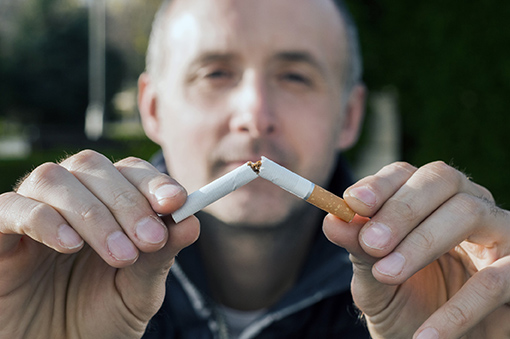Headline: Hansal Verma Displeased with Compulsory Smoking Disclaimer on OTT Platforms, Calls for Balanced Content Regulation – Issue 23

Headline: Hansal Verma Displeased with Compulsory Smoking Disclaimer on OTT Platforms, Calls for Balanced Content Regulation – Issue 23
Date: July 28, 2023
Famed filmmaker Hansal Mehta has expressed strong disapproval of the mandatory smoking disclaimer recently implemented on Over-The-Top (OTT) platforms. The Indian government’s move to enforce a smoking disclaimer on streaming services like Netflix, Amazon Prime, and Disney+ Hotstar has sparked a debate over creative freedom and content regulation in the digital realm. Known for his thought-provoking and socially relevant movies, Hansal Mehta joins others in calling for a delicate balance between public health concerns and artistic expression.

The government’s decision to impose the smoking disclaimer comes from growing worries about the impact of on-screen smoking on young people and the general population. This disclaimer, now mandatory for content featuring smoking scenes, displays a prominent visual warning during such sequences, stating, “Smoking is injurious to health.”
Supporters of creative freedom argue that the disclaimer may undermine the artistic integrity of movies and shows, affecting the storytelling and overall narrative. Hansal Mehta, renowned for his films on social issues, believes that filmmakers should be responsible in portraying smoking and sensitive subjects. However, he emphasizes that such creative decisions should be left to the directors and writers, rather than imposed by regulatory bodies. Mehta stated in an interview, “As artists, we have a responsibility to showcase reality, and smoking, being a part of life, can sometimes be crucial to a character’s portrayal or the story’s essence.”
Backing Mehta’s stance, many in the film industry argue that excessive disclaimers and regulations may dilute the authenticity and impact of cinematic expressions. They believe viewers are already well aware of the health risks linked to smoking, and constant disclaimers may have limited effects. Instead, they propose a more nuanced approach that encourages filmmakers to depict smoking responsibly and within the broader context of the narrative.
On the other side, public health activists and concerned parents view the smoking disclaimer as essential to protect young minds from glamorized smoking depictions in media. They assert that OTT platforms, accessible to a vast audience, should be accountable for the content they broadcast. By displaying a prominent disclaimer during smoking scenes, they hope to discourage young individuals from adopting smoking habits and reduce tobacco usage.

The contentious issue raises questions about the government’s role in content regulation on digital platforms. With the increasing popularity of OTT services, there’s an ongoing debate on the extent of authorities’ interference in content creation. Achieving a balance between freedom of expression and public health concerns remains a challenging task.
Industry insiders suggest that fostering open dialogue between the government, filmmakers, streaming platforms, and public health experts may be the solution. Collaborative discussions could lead to guidelines instead of rigid rules, allowing artists to retain creative autonomy while adhering to ethical storytelling principles.

In countries like the United States, filmmakers voluntarily include smoking disclaimers as a measure of responsibility without government compulsion. This self-regulatory approach could be a model worth considering for India as well. Through voluntary efforts, creators can address public health concerns without compromising their artistic vision.
As the debate around the mandatory disclaimer continues, public opinion remains divided. Some view the disclaimer as a step in the right direction, considering the growing prevalence of smoking among young adults and the need to safeguard the impressionable minds of the future generation. They argue that visual media, such as films and shows, can significantly influence audiences, making it essential to highlight smoking’s potential health risks. For them, the disclaimer serves as a potent reminder, prompting individuals to make informed choices about their health and lifestyle.
However, others believe that the focus on these disclaimers should not overshadow more extensive content-related issues. They urge authorities to address a broader range of harmful behaviors depicted in media, such as excessive alcohol consumption, drug abuse, and violence. Critics argue that isolating smoking scenes with a disclaimer may inadvertently normalize other unhealthy behaviors. They propose a comprehensive approach to content regulation that encompasses a wider array of potentially harmful content, establishing a balanced and consistent standard for filmmakers and content creators.
Undoubtedly, the inclusion of smoking disclaimers on OTT platforms reflects the need for a nuanced approach to content regulation. Striking a delicate balance between creative freedom, public health concerns, and responsible storytelling remains a formidable challenge. To ensure that artistic expression thrives while protecting society’s well-being, stakeholders from the film industry, government, public health sector, and the public must continue engaging in constructive dialogue.
By exchanging ideas and insights, a collaborative framework that upholds artistic autonomy while remaining sensitive to societal needs can be established. Implementing a content regulation policy that respects creativity and social responsibility could set a precedent for other nations grappling with similar dilemmas in the digital media age. India’s pursuit of common ground will shape a future where storytelling’s power coexists harmoniously with public welfare.




